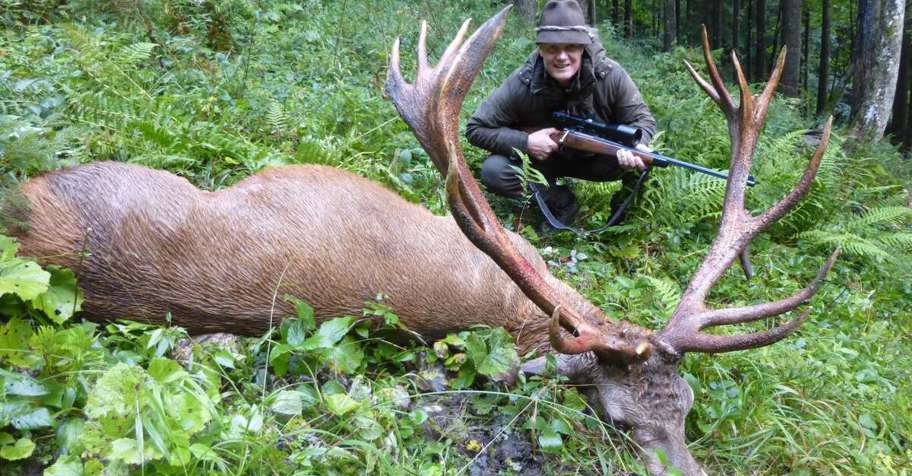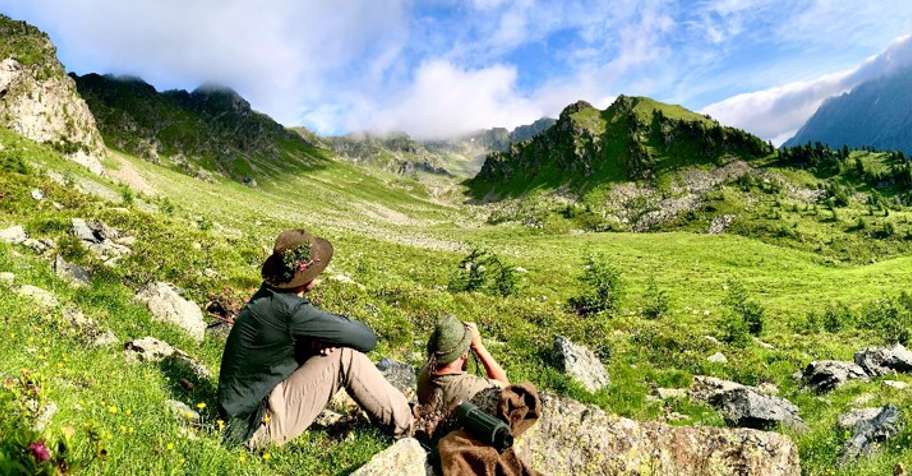
6
hunting trips
$617
starting from
2
outfitters
6
animals
Why Austria

Unique hunting tradition and culture
Enjoy traditional stalking in the mountains while surrounded by roaring stags, climbing a peak to chase the majestic chamois, or participating in a classic driven hunt to test your shooting skills

Unforgettable experience for your family
Austria offers plenty of opportunities to combine hunting with a family trip. You and your family can enjoy visits to various world-renowned destinations such as Vienna, the capital, or Salzburg, the city of Mozart. There are many options for cultural experiences for a non-hunting companion and for tours before and after a hunt. The small towns throughout the Alps are also very inviting and welcome tourists from around the world

Unique game species
Austria is well known for its exemplary management of its game animals, including red deer, fallow deer, sika deer, roe deer, chamois, mouflon, Alpine ibex, marmot, and wild boar. There are also healthy populations of black cock and capercaillie
About hunting in Austria
Austria, proud of its centuries-old hunting tradition, is one of the most welcoming countries in Europe for the hunter. You can expect high-quality hunting services and a strong sense of hospitality toward hunters. Hunting is deeply rooted in Austrian society and hunters are regarded as role models because of their ethical values and understanding of and identification with nature. Hunting in Austria will give you insight into how this century-old tradition developed and why it continues to this day.
A great variety of magnificent natural landscapes await the hunter. Experience the Northern Alpine Foreland, which includes the breathtaking Danube Valley; the lowlands and hilly regions in northeastern and eastern Austria, with its high density of forests and fields; and the rolling hills and lowlands of the Southeastern Alpine Foreland to the west, dominated by the impressive, soaring peaks of the Alps.
Austria on map
What you need to know
1. Planning your trip
2. Upon arrival
3. Hunting
4. After the hunt
Planning your trip
Visa
Citizens of the European Economic Area, the United States, Canada, Israel, and many other countries do not need a visa for a stay in Austria of up to three months.
Hunting permits
Outfitters will assist clients in obtaining their hunting permits. Generally a visiting hunter will need to produce a valid hunting license from their country of nationality in order to get a permit to hunt in Austria.
Prohibited equipment
The use of the following equipment is prohibited in Austria:- silencers
- automatic or semiautomatic rifles
- shotguns capable of holding more than two cartridges
- bow hunting equipment
- any electronic optical aiming equipment on the gun, such as night vision or thermal imaging scopes
Game classification
Reviews
Client review
Austria
10.0
Verified review
Jul 28, 2025
Fantastic area and great value for money
10.0
Schreier Travel Agency
Outfitter
Professional approach to the organization of the hunt
Good price
Fantastic nature
all Was great
Reliable
Unique
Good Value for Money
Jerry
Germany
10.0
Verified review
Jul 23, 2024
Amazing
10.0
Jagd Eisenwurzen
Outfitter
Hunting Area, variety of wildlife, services provided by hunting guide.
No negative experiences
Client review
Andorra
10.0
Verified review
Aug 1, 2025
Excellent adventure
10.0
Schreier Travel Agency
Outfitter
Good people, very good organization, respect for the wild animals
Reliable
Useful
Good Value for Money
Paul Daniel
United States
9.7
Verified review
Aug 8, 2022
Excellent hunt
9.7
Jagd Eisenwurzen
Outfitter
Martins knowledge of the hunting area and animals was incredible.
Nothing to dislike. Enjoyed every minute.
High Quality
Client review
United States
7.3
Verified review
Sep 28, 2021
Animals
Bush TV
Check out an amazing footage from outfitters and landowners properties.

Alpine Ibex
This Alpine Ibex has a scratch

Ibex on the edge
Big Ibex walking on the edge of a cliff
Top hunts

Austria
Interested in this destination?
Create a subscription to get offers right to your inbox
You might also like
Explore hunting
trips worldwide
trips worldwide
Direct offers from outfitters
with no booking fees
with no booking fees
Verified reviews
from other hunters
from other hunters


